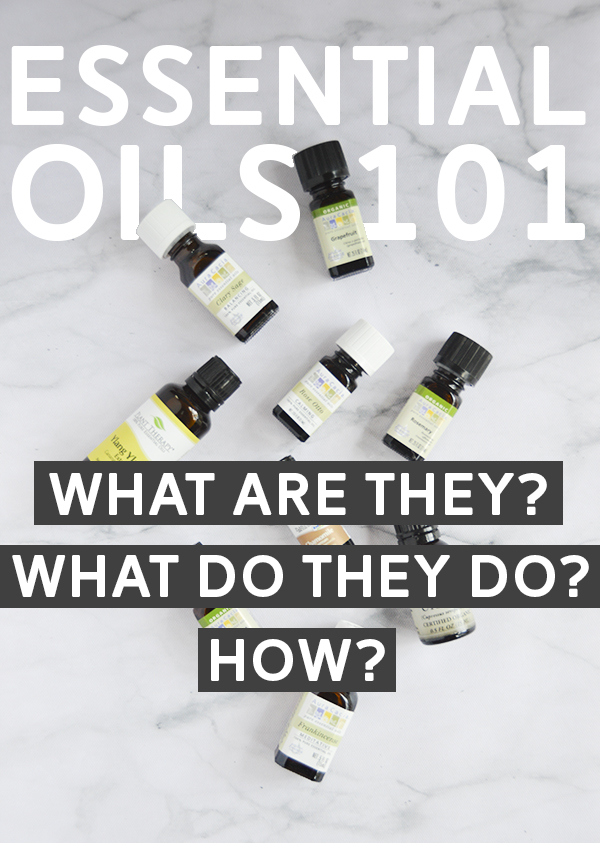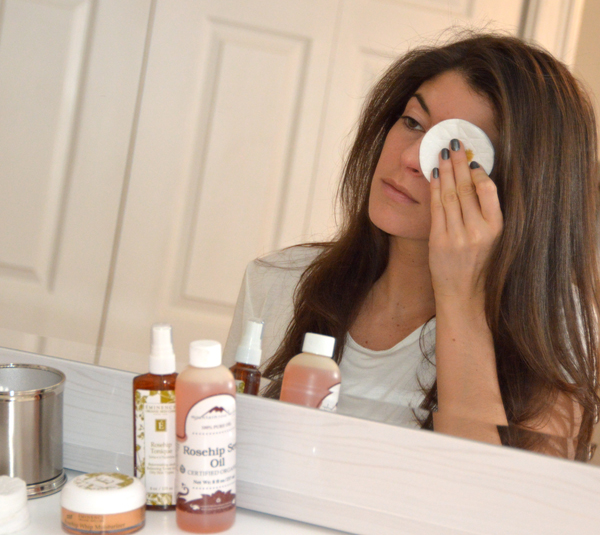 Quick Aromatherapy certification update: All my coursework has been approved (!!) and I just received the final exam in the mail. The finish line is in sight! But until I’m officially a Certified Aromatherapist, I want to hold off on sharing any blends or doling out specific advice on the blog. So in the meantime, I thought it’d be helpful to do a mini Essential Oils 101 series to lay the foundation for anyone new to them. Today I want to start by answering the basic questions: What are essential oils? What do essential oils do? How? Next week I’ll talk more about what to look for in an essential oil brand, which ones I recommend, and what to know about storage and starting a collection of your own at home.
Quick Aromatherapy certification update: All my coursework has been approved (!!) and I just received the final exam in the mail. The finish line is in sight! But until I’m officially a Certified Aromatherapist, I want to hold off on sharing any blends or doling out specific advice on the blog. So in the meantime, I thought it’d be helpful to do a mini Essential Oils 101 series to lay the foundation for anyone new to them. Today I want to start by answering the basic questions: What are essential oils? What do essential oils do? How? Next week I’ll talk more about what to look for in an essential oil brand, which ones I recommend, and what to know about storage and starting a collection of your own at home.
What Are Essential Oils?
Essential oils are the volatile aromatic principles found in plants. “Volatile” might sound foreboding, but it just means they turn from liquid to gas very easily and rapidly at room temperature or higher. They are the byproducts of plant metabolism and are produced and stored in special cells.
That’s the cut-and-dry definition of essential oils, but what I love about aromatherapy is that it’s rooted in science while also inhabiting this sort of higher (“whimsical” some would say) realm of health that’s connected to spirituality, the mind, and concepts that can’t be quantified in a laboratory. In that sense, essential oils can be defined as the soul of a plant—they are the plant’s life force and inner energy.
To give you a sense of their potency, one drop of essential oil is equal to about 30 cups of herbal tea. That’s important to keep in mind when using them: A little goes a long way! And more is not more—in fact, using too high a concentration of an essential oil can cause it to have the opposite of its intended effect.
The most common method of extracting an essential oil from a plant is steam distillation. Steam is passed through the plant material, which causes the oil to release from the sacs and vaporize. The steam is then passed through a condenser (this is the cooling phase), which returns it to a liquid with the essential oil separating from the floral water.
Lots of different parts of plants are used to produce essential oils. Flowers, for example, are used to produce Rose and Jasmine essential oils. Peppermint and Patchouli are derived from the leaves and stems. Citrus essential oils like Lemon and Grapefruit come from the fruit peel.
What Do Essential Oils Do?
Where do I even begin to answer this? Essential oils can be integrated into your life in a myriad of ways. From aiding in physical problems and ails, to supporting mental, emotional and spiritual health. They do far more than just smell pretty (although that in itself is significant!). Name an issue you’re having, and there’s a way essential oils can support it.
Well what if I snap my femur in half? Is your little bottle of oil going to heal me then?
Thanks for asking, smartass. And actually, yes, essential oils can help! After surgery, you may be dealing with the prospect of some pretty gnarly scars on your leg. A blend of appropriate essential oils in the right carrier oil can be applied to the skin during recovery to help prevent the formation of and lessen the appearance of scars. This broken leg of yours is also probably going to interfere with your job and make life a lot more stressful for you. Diffusing a blend of stress-reducing essential oils in your room throughout the day can help you stay calm through your recovery. When the cast does finally come off and you start to build strength in your leg again, you’ll probably be dealing with intense muscle soreness. A blend of essential oils in Epsom salt can be added to your bath for a relieving aromatic soak.
So no, essential oils can’t fuse a broken bone back together, but they can certainly help with recovery!
How Do Essential Oils Work?
How are these potent little drops of plant juice so effective? Well they work in many ways.
Let’s start with science. If we break essential oils down to their chemical constituents, there are many chemical families represented that you’ll recognize from other known remedies and pharmaceuticals. Alcohols (constituents ending in -ol), for example, are known to be used for their antibacterial, antiviral and anti-infective properties. Well in looking at the chemical composition of essential oils like Tea tree, there are high levels of alcohols. Not surprisingly, Tea tree oil is used to treat ailments involving bacterial infection, fungal overgrowth and viruses.
There are an increasing number of studies identifying the exact chemical constituents within essential oils responsible for making measurable changes in the body (and brain), and while I won’t dive deeper into it in this intro post, it’s worth mentioning for those quick to brush aromatherapy off as quackery.
But to reduce an essential oil down to its chemical constituents is to miss the real magic of it. Our sense of smell is connected directly to the limbic portion of our brain via the olfactory bulbs. The limbic system is the home of memory, emotion and primitive reactions and drives. Because of this, scent-memory association is strong. Have you ever gotten a familiar whiff of something and immediately been transported back to a specific time in your life? Or been reminded of a person you associate with that scent? Or experienced a shift in your emotions because of a scent? This is a silly example, but when I smell sunscreen (not the good-for-you natural stuff, but the Coppertone crap we used in the 90s and early 2000s), I’m not just reminded of carefree childhood summers at the beach, I actually feel happier and more relaxed. I could be sitting in a dungeon—if I smell sunscreen, I feel happy.
The responses to scent aren’t just emotional or mental, but physical, too. As a hypothetical example, let’s say you used to have an absolutely horrible boss who was constantly on edge and would yell and criticize you and your work every time he called you into his office. Every encounter was intensely stressful, and when we experience that feeling our heart rate rises, our blood pressure rises—there are physical changes. Now let’s also say this terrible boss used lemon-scented air fresheners to fragrance his office. Even years after you quit and start your dream job, it’s possible to smell lemon scents and not just be reminded of that d-bag, but your heart rate will rise, your blood pressure will rise …
The scent illicits physical responses associated with your initial experience or most profound experience of the scent.
Because of this, you can’t just simply say that Essential Oil A contains B and C and is therefore good for treating X, Y and Z. It’s true, but you also have to take into account the individual being treated and her/his experiences, personality and preferences. Peppermint may be great for alleviating headaches (it is!), but if the person suffering from a migraine has an aversion to the smell, or it reminds her of a stressful, terrible time her life, an alternate oil should be used. Or perhaps the Peppermint oil should be used in a blend with others to create a unique, synergistic scent while still reaping the benefits of Peppermint’s chemical makeup.
Essential oils can work even better together in a blend, holistically treating not just the main issue (i.e. arthritis) but the secondary stuff that comes with it (i.e. feelings of sadness at not being able to participate in the activities you once loved).
Essential oils work on a physical, emotional, mental and spiritual level.
Also of note before I wrap this post up is aromatherapy’s ability to connect us back to nature, even in some small way. Especially in today’s modern world, many of us are more disconnected from the natural world than ever before—and missing that fundamental connection does not come without consequence. Just think how calming, invigorating and therapeutic it is to go for a peaceful walk through the woods. Or sit on a bench in the middle of a beautiful flower garden. Or lay on the sand listening to the ocean lap against the shore. (Not that sand can be turned into an essential oil, but you get my point lol). Aromatherapy allows us to experience a little piece of the natural world indoors with us.
So now that I’ve convinced you all that this shit is legit … Next week I’m going to go over all the basics for starting to build and use your own collection of essential oils at home. I’ll tell you which oils to start with, what to look for when choosing an essential oil brand, and the basics of storing and using them. Any specific questions you want answered? Leave me a comment below!
xo Nicole









